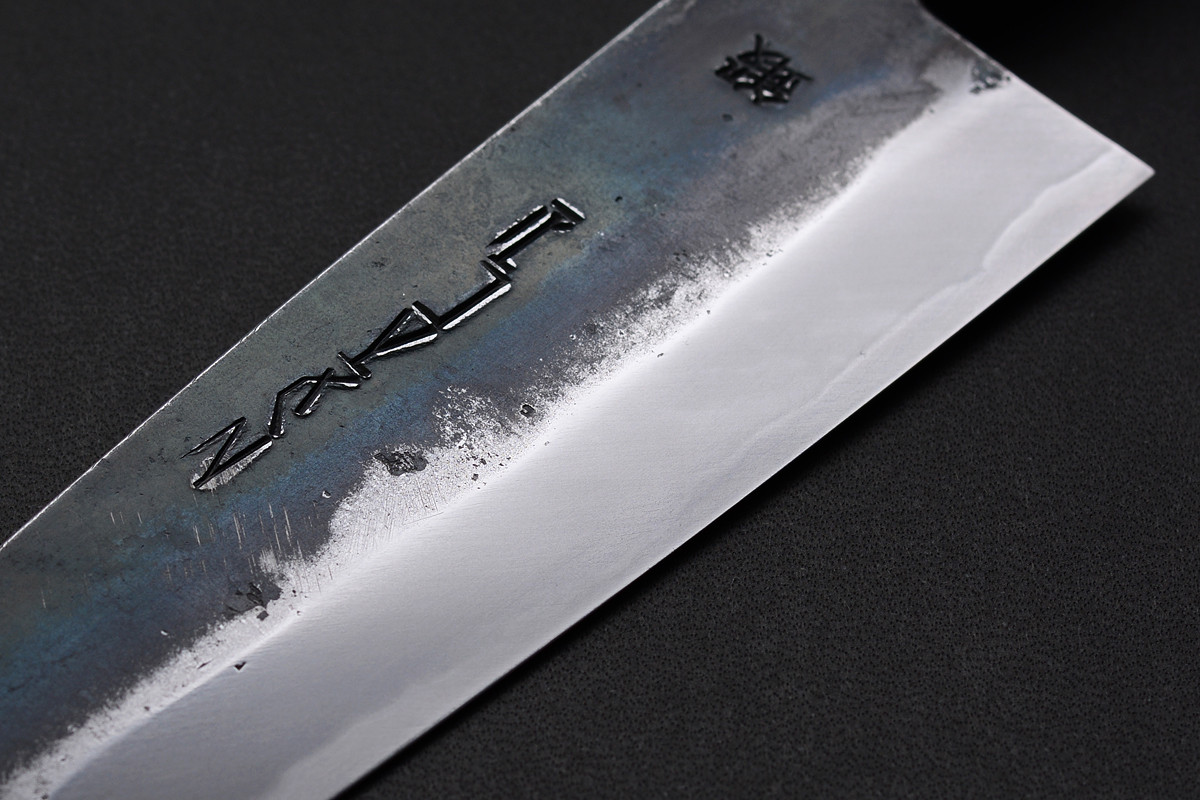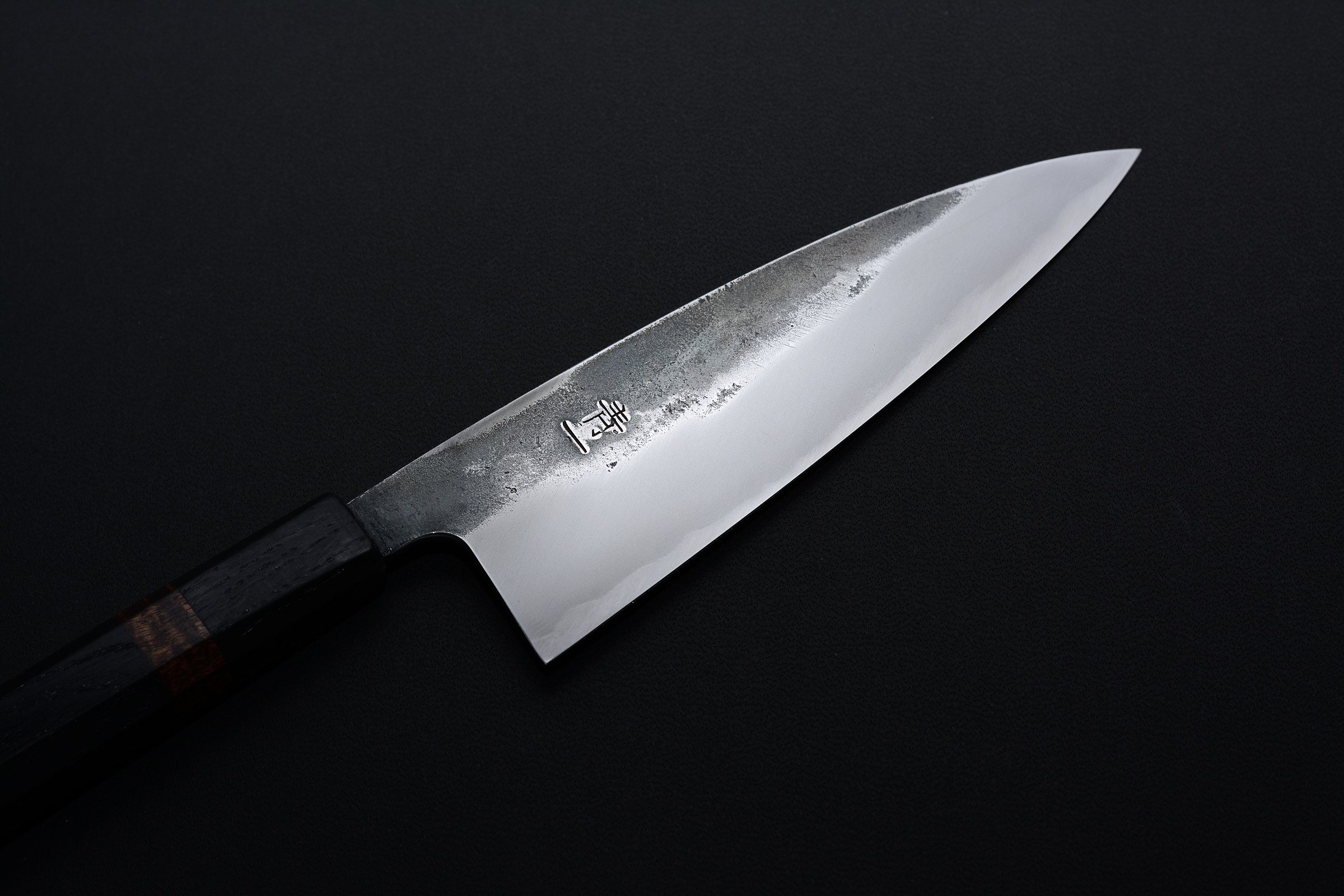I have a Kono Fuji B2 gyuto. I think the bevels are more than cosmetic. I love the knife. I seem to see mostly very positive stuff about the Kono Fujis, over quite a long period of time, but opinions do vary a bit.
I'll be receiving the Takayuki passaround knives this week, so look forward to doing some direct comparisons!
Again, I am not denigrating the performance or desirability of any knife.
Here is a timely example: I just now received a Zakuri 240mm aogomi super gyuto from JKI. Just opened the box. From the photos, it certainly looks like a "wide bevel" knife. However, the actual main bevel is about ½ inch up from the edge, nowhere near the cosmetic Shinogi line. In fact, when you trace your finger from the top of the knife, along the side, all you feel is the change in surface texture when you reach the "Shinogi".
Does this make the knife better or worse? Well, to me, I am a bit disappointed, but will keep the knife anyway, as it has a good feel to it, a good edge, and it was reasonably priced. What bothers me more is the profile, which has a slight belly to it.
Before anyone gets down on me for bringing this up, just ask yourself: why are they doing it? I mean, Kato doesn't seem to think this is necessary, and his knives are outstanding. For years Mizuno offered a blue steel gyuto (which I have.) Then, recently, they took the exact same knife and put a cosmetic bevel on it. Probably not as bad as electronic exhaust sounds on some new cars at the Detroit auto show, but the same idea.
So. Caveat emptor. Just don't think its built like a Heiji...









